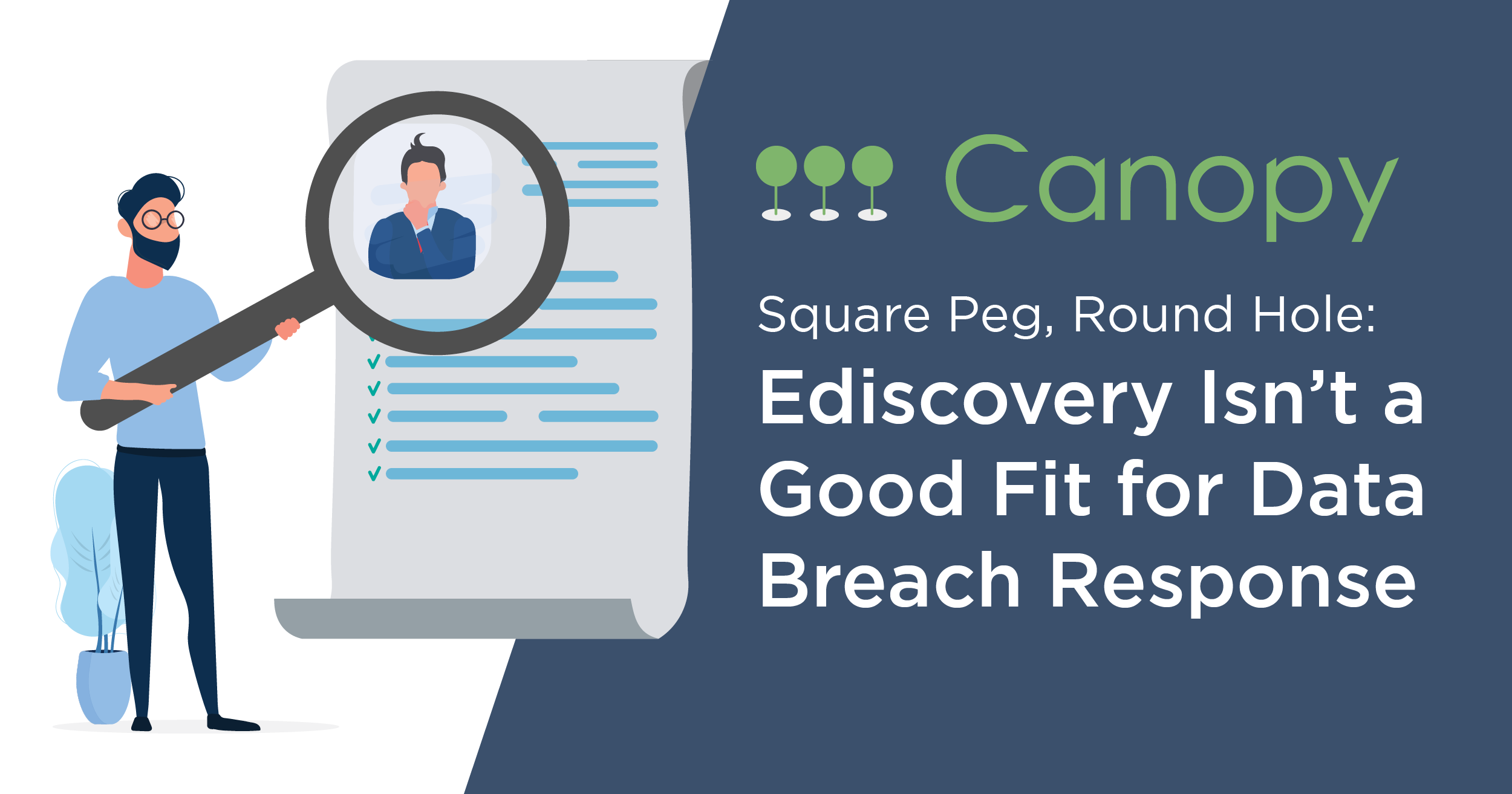“Can I use ediscovery to respond to a data breach?” Technically, the answer is “yes,” — but should you? That’s the real question, and a wrong decision could compromise your project’s accuracy and cost you extra time and money, especially when working with large or complex data sets.
Let’s take a step back and look at how ediscovery first became a popular solution for data breach response. At a high level, these two industries look really similar — there’s data processing, early assessment, and data review involved in each of them. But if you look closer, you will notice some significant differences.
Interested in 5 Reasons Why Ediscovery Is Not a Data Breach Response Solution? Download our whitepaper and watch our webinar for an in-depth look.
In recent years, the enactment of regulations regarding people’s data has outpaced software solutions, forcing organizations to find ways to adapt. So for quite a while, organizations that have suffered a privacy incident or data breach have often used ediscovery tools to analyze and review compromised data because other options didn’t exist.
But ediscovery is no longer the only option. As hackers have gotten more skilled and regulators have increased the responsibility of organizations that collect sensitive information, data breach response has emerged as its own segment of incident response. And now, Canopy’s AI-powered cybersecurity software offers a solution purpose-built for this segment’s unique needs.
Additional Resources
To further explore this topic, download our white paper, 5 Reasons Why Ediscovery Is Not a Data Breach Response Solution. To hear more details and see how Canopy is redefining data breach response, watch our on-demand webinar featuring Adi Elliott, 🌳🌳🌳 Canopy CRO and ediscovery veteran, and EDRM CEO Mary Mack (originally aired April 29, 2021).

